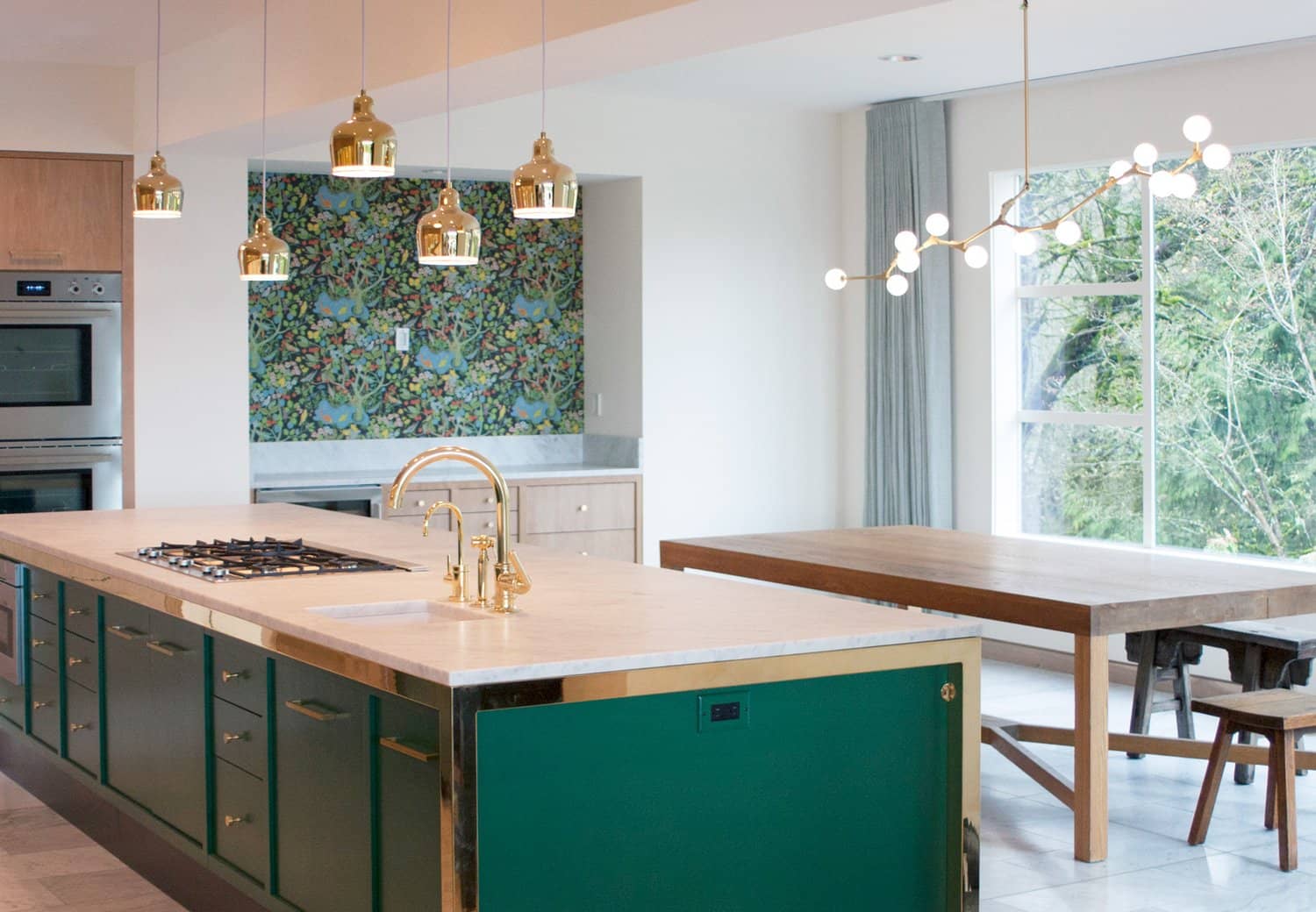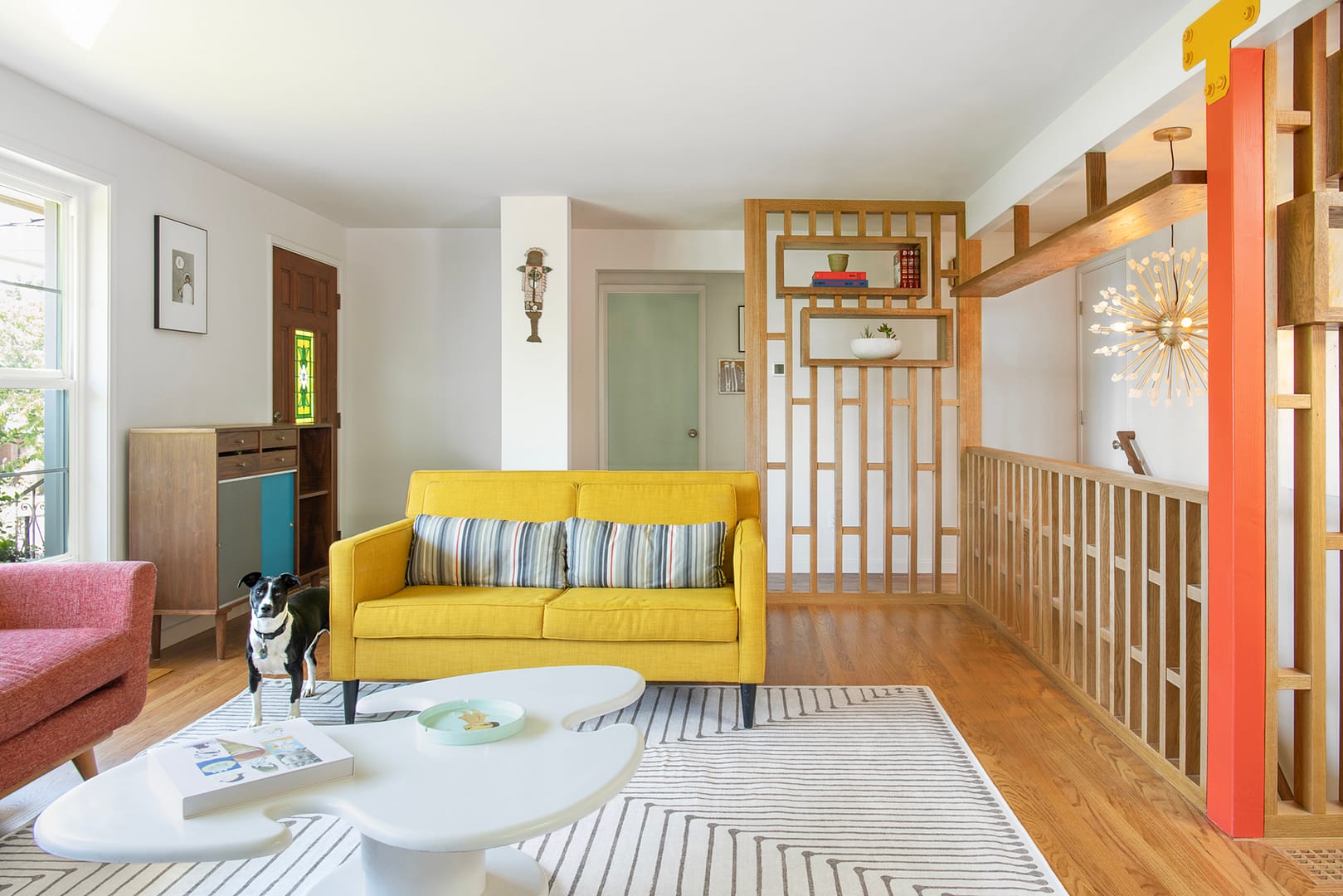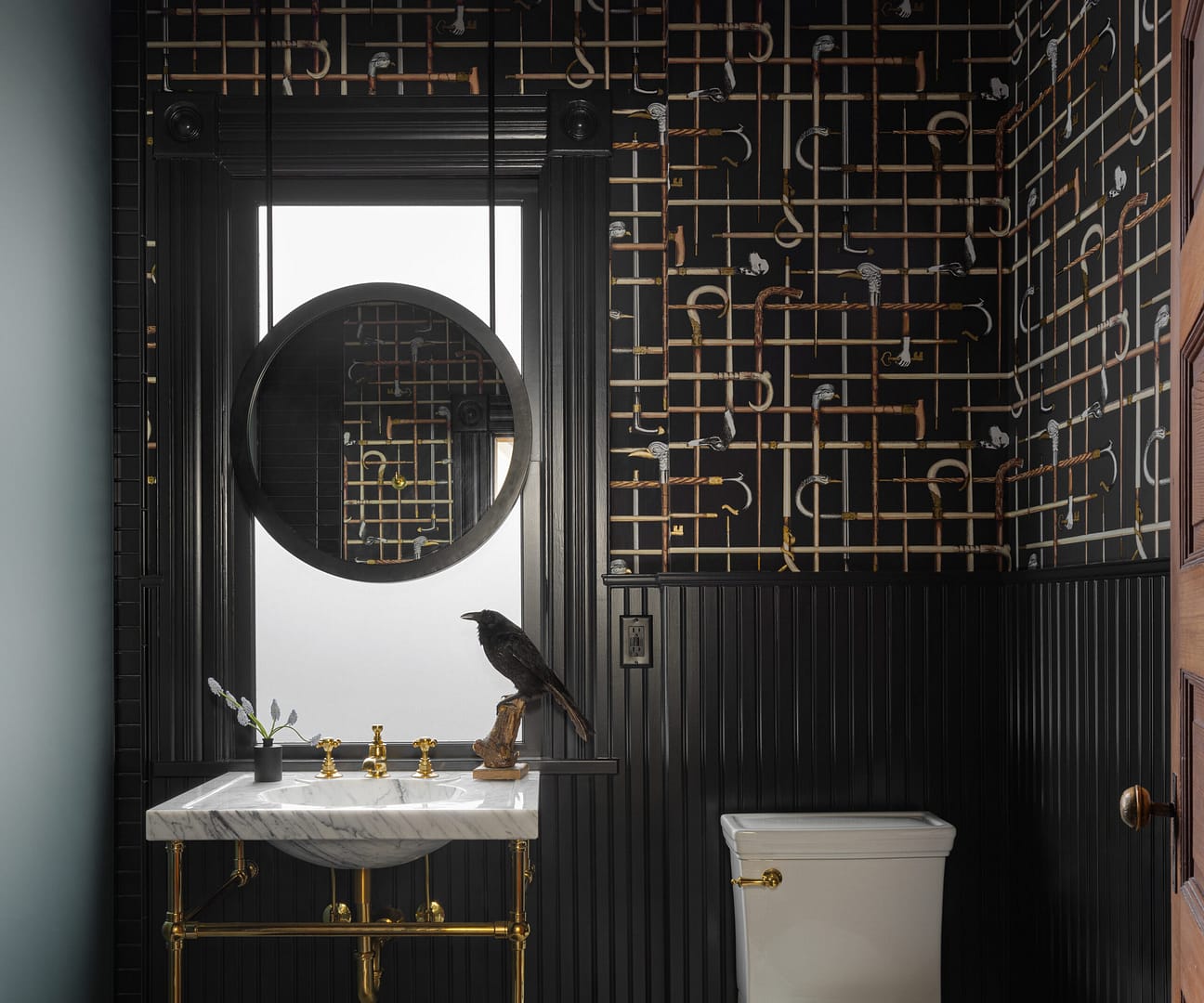This Mid-Century Modern home had received several updates over the years, resulting in a house with a dark, uninviting mismatch of styles. Transforming the decades-old space into the stunningly bright and open home designed by Risa Boyer at Risa Boyer Architecture required a great deal of precision and attention to detail. The new design’s Northwest Modern aesthetic is very specific about lines, angles, and surfaces, which are not always easily applied to a 60-year-old home. However, our expert team of carpenters were able to not only meet or exceed expectations, but to make it look nearly effortless.
In addition to a full studs-out remodel of the main house designed around the clients’ need for quiet spaces and easy access to the outdoors, Hammer & Hand also built an ADU and a bicycle workshop on the property. This project came with specific needs and a very high level of expectations, and the Hammer & Hand team (led by Site Superintendent Steve Pink, along with Carpenters J Leaver, Josh Tinker, and Carrie Heally) were able to deliver a finished home that stayed true to the architect’s vision and which continues to delight the homeowners.
Read more about this remodel in its Dwell Magazine feature!



